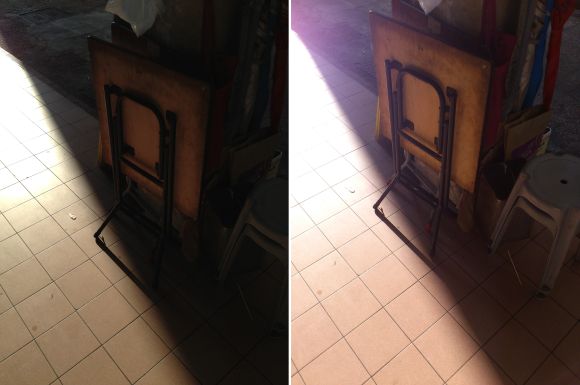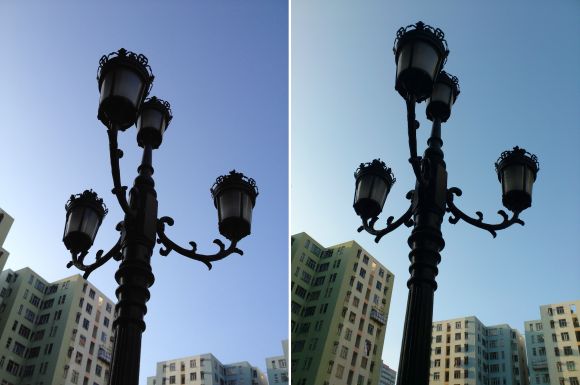 Sony Ericsson has announced its global roll out of their Android 2.3.4 update, including Malaysia. The update is offered the following Xperia models:
Sony Ericsson has announced its global roll out of their Android 2.3.4 update, including Malaysia. The update is offered the following Xperia models:
Xperia arc
Xperia PLAY
Xperia neo
Xperia mini
Xperia mini pro
Xperia pro
Xperia ray
Xperia active
Xperia neo V
Xperia arc S
Sony Ericsson Live with Walkman
Unfortunately older Xperia models such as the Xperia X10 and X8. Among the new features and improvement include:
Google Talk with Video Chat for smartphones with front-facing cameras
Updated Facebook inside Xperia™ functionality for enhanced like, share and discover abilities.
Xperia™ smartphones introducing world’s first 3D Sweep Panorama functionality powered by Sony.
16x video zoom
The software upgrade will enable consumers to turn their Xperia™ smartphone into a mini-mobile PC by connecting USB peripherals (mouse, keyboard or game controller) to Sony Ericsson LiveDock™ multimedia station. Connect the smartphone to a TV via HDMI to get a big screen experience.
Gesture input – text input by swiping the finger from one letter to the next
WiFi DLNA
Screen capture – allows the user to share a screen grab from anywhere in the phone.
The update was initially rolled out to users at the Nordic but now it is available for the rest of the world including users in Malaysia

When Apple announced 8GB versions for earlier iPhone models, it was meant to be entry level models to make it affordable for the masses. That doesn’t seem to be the case here until recently.
The Apple Store is also offering the iPhone 3GS 8GB for RM1,199 in Malaysia. This makes it cheaper and can be a choice for mid level smart phone buyers.
The iPhone 3GS is still decent smart phone with access to a huge library of apps on the App store. In terms of software, it is still on par with the latest iPhone as it supports iOS 5 albeit with reduced new features. Other smart phones within that price range are Sony Ericsson Xperia ray, LG Optimus Black, Samsung Galaxy S Plus and Samsung Galaxy W.
As comparison, Maxis iPhone page is still showing the 3GS 8GB priced at RM1,790. There’s an i3GS promo plan which offers the phone for RM199 with 24 months contract.
For more information, check out here.

While waiting for the iPhone 4S to show up in Malaysia, the iPhone 4 8GB version is finally available in Malaysia. It is currently selling through Apple’s Online Store for RM1,799 in both Black and White colour options. Best of all, there’s no tie in with any telco so you can pop in any micro-SIM of your choice without any lock-in contract.
Looking at the bigger picture, this may very well indicate that the iPhone 4S will be coming in very soon. In September last year, the iPhone 3GS 8GB version was offered in Malaysia 24 days before the iPhone 4 was launched by both Maxis and DiGi. Your guess is as good as ours but it is highly possible for the iPhone 4S to arrive in the next month or so.
For more information, check out here.

Wondering how much you’ll need to spend on the accessories you want for the DROID RAZR. We’ve got the Lapdock 100 for $200, the Lapdock 500 for $300 and HDMI docks for $60 and $100. Take a look at the full breakdown in the photo above.
So for Malaysia price, we can try and convert it and order it through credit card transaction for now.
(phandroid)

While tipsters say the design is still in flux, the phone was captured in a series of images obtained by the guys over at Phone Arena. The handset was referred to as the LG Prada P940 and is said to measure in at under 9mm thick. It also gets a 4.3-inch NOVA display (think Optimus Black), 8MP camera, and a dual-core processor of unknown clock speed. 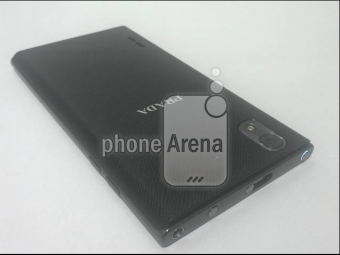
(http://phandroid.com/2011/10/27/lg-prada-k2-pictured-in-the-wild/)

Updated with upcoming Samsung Galaxy Note and NFC support comparison.
With 2 new devices – Motorola RAZR & Galaxy Nexus launched today, it is time for another round of smart phone comparison. Another update is the Galaxy Nexus does not come with expandable Micro SD slot which is a bummer.
Both the RAZR and Galaxy Nexus runs on dual-core 1.2GHz processors and 1GB of RAM. In the OS department, the Galaxy Nexus sets itself apart with the latest Android 4.0 Ice Cream Sandwich while the Motorola Razr runs on Android 2.3.5 Gingerbread. That won’t be a difference in the next few months as Motorola is planning to offer Android 4.0 upgrades for the Razr.
In terms of screen, the Nexus has a bigger 4.65″ screen with higher resolution Super AMOLED that supports 1280×720 while the Motorola Razr offers a 4.3″ Super AMOLED Advanced with respectable qHD resolution of 960×540. In terms of connectivity, the Galaxy Nexus supports HSPA+ up to 21Mbps while the RAZR supports up to 14.4Mbps HSPA. This isn’t a big deal since U Mobile is the only one that commercially supports HSPA+.
While the Galaxy Nexus seems to trump RAZR in the screen and OS aspect, the RAZR offers a higher 8MP camera as oppose to the Nexus’s 5MP and it is juiced up with a large 1780mAh capacity battery. Unfortunately the high capacity battery on the RAZR is non removable which probably is a compromise to maintain its slimmest 7.1mm profile. In terms of weight, the RAZR is lighter than the Nexus at 127g but it is still heavier than Samsung Galaxy S II’s 116g weight.
Which would be your choice guys :)
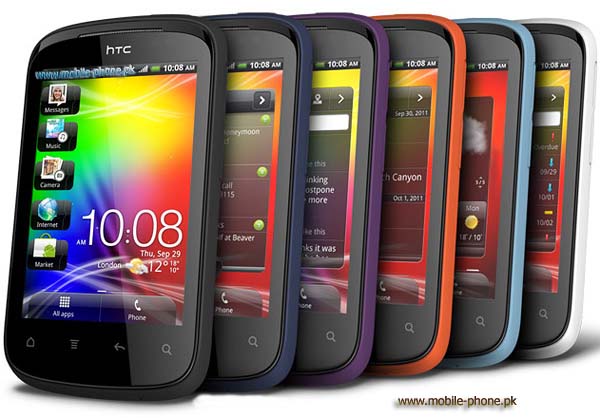
The HTC Explorer is finally available for sale in Malaysia with a RRP of RM759. The discovery was found on SuperBuy website after being tipped via twitter. If you order online, they are offering it with discount at RM729 which also can be paid with 6 or 12 month installments by credit card.
Just to recap on the specification, the HTC Explorer runs on a 600MHz processor, 512MB of RAM with Android 2.3.5 Gingerbread OS installed. It has a 3.2″ HVGA display with 480×320 resolution and comes with 512MB of storage which is expandable via microSD. For photo shooting, there’s a 3MP camera at the back.
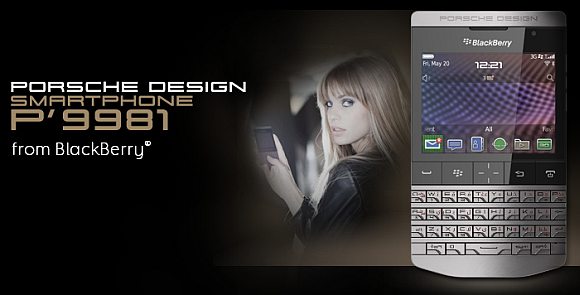
The Porsche Design BlackBerry has finally been revealed as the Porsche Design P’9981 Smart phone. This is an exclusive BlackBerry with its exterior radically styled with stainless steel and leather.
Internally its rather similar with its flagship BlackBerry Bold 9900 that comes with a 1.2GHz processor, 768MB RAM, 8GB of internal storage, 2.8″ VGA display and a 5MP camera capable of shooting 720p HD videos. The difference lies on the exterior as the Porsche P9981 is slightly wider by 1 mm and thicker by 0.8mm compared to the Bold 9900. The premium materials add 25 gram extra, making it a total of 155 grams.
Being a premium device, the P’9981 features an exclusive BlackBerry PIN with a “2AA” prefix. In terms of price, it is rumoured to be $2,000. That’s in USD, which makes it slightly more than RM6,000 price in malaysia. That’s a lot to pay for a blinged up BlackBerry Bold 9900.
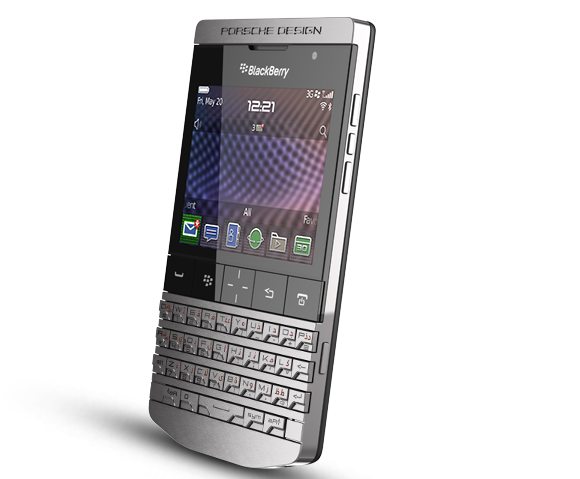


 Yet another Samsung device appears and it is the Samsung Galaxy Y, an entry level Android smart phone. The pricing is written as RM499 outright with Superbuy offering it for a discounted price of RM475.
Yet another Samsung device appears and it is the Samsung Galaxy Y, an entry level Android smart phone. The pricing is written as RM499 outright with Superbuy offering it for a discounted price of RM475.
The Samsung Galaxy Y is a replacement for the existing Samsung Galaxy 5/Mini which has been selling rather well for under RM700. Now at a much lowered RM499 price, it comes with a decent 832MHz processor, 3″ QVGA TFT screen, 2MP Camera and a 1200mAh battery. On board there’s 160MB of storage which is expandable via microSD. The Galaxy Y runs on Android 2.3.5 Gingerbread.
Priced below RM500 mark, the Galaxy Y is probably the cheapest Android smartphone running on Android 2.3 in the market. Earlier on, we’ve seen the Samsung Galaxy W going for RM999 which is quite a bargain for a 1.4GHz Android with a decent 3.7″ WVGA screen. It is obvious now that Samsung is aggressively hitting the smart phone segment at all price range.
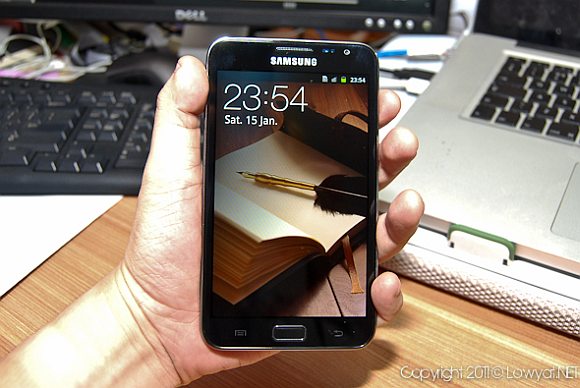
The upcoming 5.3″ Samsung Galaxy Note has finally appeared in Malaysia.
Earlier we predicted the Galaxy Note will be launched in Malaysia sometime in December but it would launch probably on November. With the recent price drop of its 4.3″ Samsung Galaxy S II and this latest preview, we might be seeing a possible launch in the next couple of weeks to come. Pricing wise we would expect it to be priced around RM2,000 to RM2,300 range.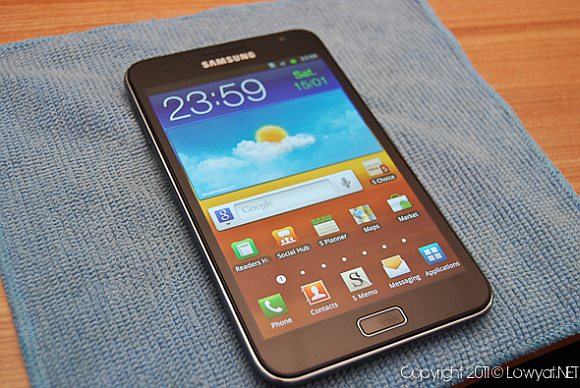
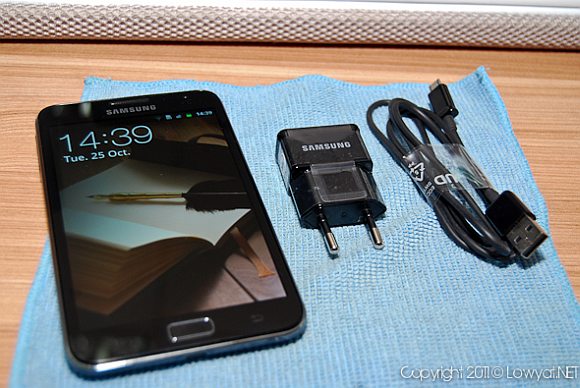
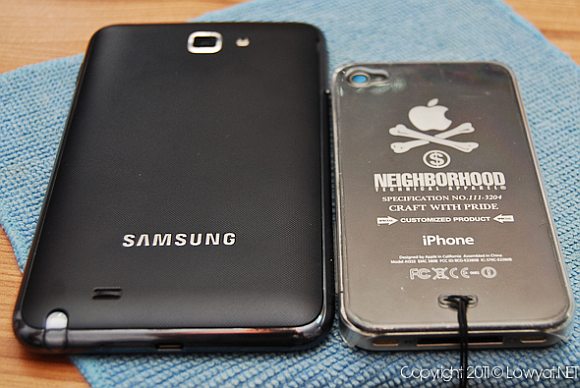
(soyacincau)
 Despite being a mid-tier device, the Galaxy W is no slouch as it runs on a single core 1.4GHz processor and it has Android 2.3 Gingerbread installed. It has a larger 3.7″ S-LCD display with 800×480 resolution. Internally comes with 2GB storage and 512MB of RAM. For imaging, it has a 5MP camera with assisted flash that’s capable of shooting 720p HD videos. There’s also a VGA camera at the front for video calls.
Despite being a mid-tier device, the Galaxy W is no slouch as it runs on a single core 1.4GHz processor and it has Android 2.3 Gingerbread installed. It has a larger 3.7″ S-LCD display with 800×480 resolution. Internally comes with 2GB storage and 512MB of RAM. For imaging, it has a 5MP camera with assisted flash that’s capable of shooting 720p HD videos. There’s also a VGA camera at the front for video calls.
For RM999 in Malaysia, the Galaxy W packs quite a lot for less which puts other expensive rivals to shame. Seems like Samsung is able to give HTC a run for their money.
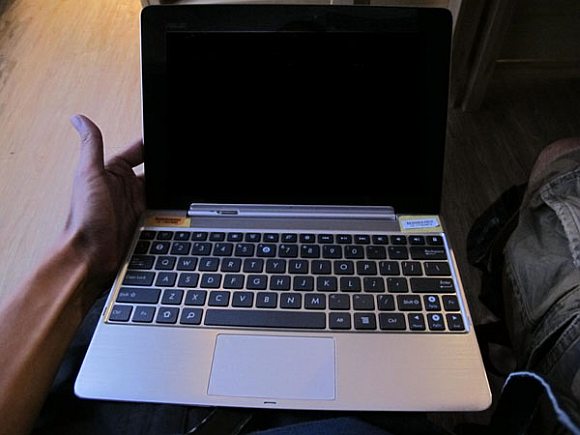
A few days ago, the upcoming ASUS Transformer replacement known as the Transformer Prime was revealed to the world at AsiaD. The new Android tablet + keyboard dock combo is slimmer and comes with a quad-core Nvidia Tegra 3 processor.
Now more close up photos of the device had surfaced, revealing more of its polished metal goodness and design. The tablet now looks shinier with a lighter colour tone compared to its predecessor. It is expected to be launched with the latest Android 4.0 Ice Cream Sandwich. All shall be revealed on 9th November.
So if any updates, i'll inform rite here then :)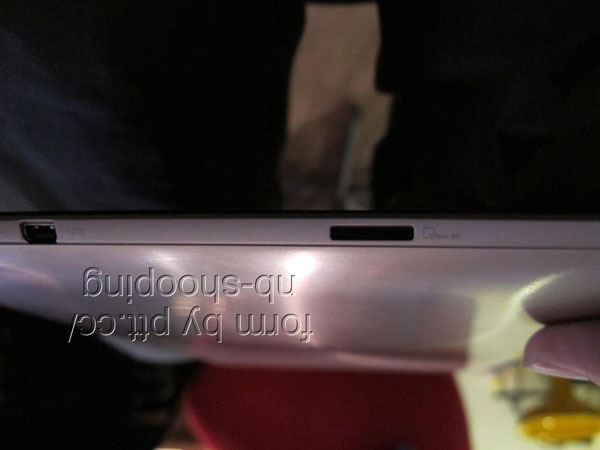

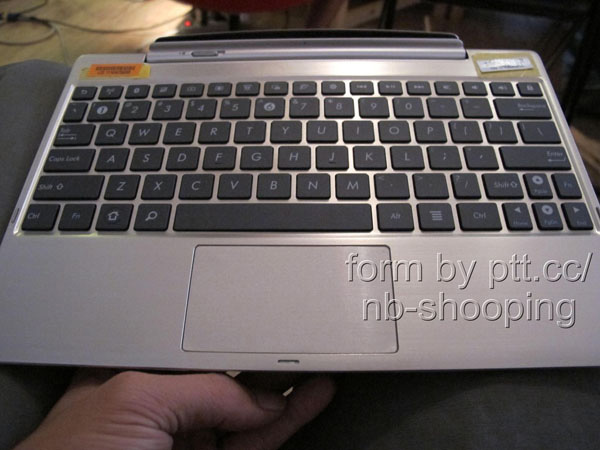
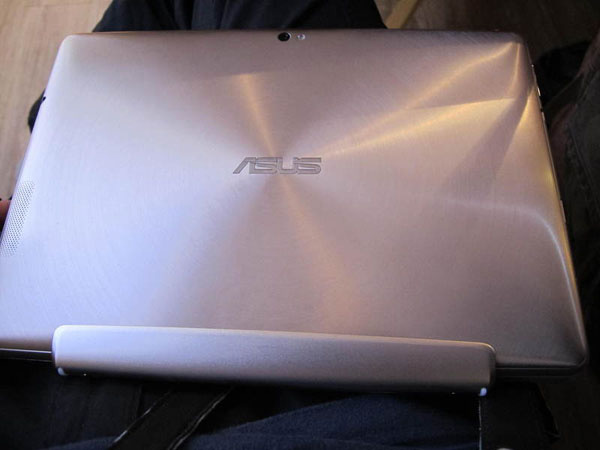

DISPLAY
While the Droid RAZR has a solid screen of its own, the Galaxy Nexus display is larger, higher resolution, and Samsung’s Super AMOLED line of screens always seem to outshine the competition: literally. While both phones can display HD quality video, the Galazy Nexus stunning… and not just because of its larger size. (Winner: Galaxy Nexus)
SOFTWARE
While I have some slight hesitation about Android 4.0, they aren’t (mostly) concerns with the Galaxy Nexus itself, but rather the ideological direction of the Android Platform as a whole. From a tech elite standpoint, the Galaxy Nexus’ software is far ahead of the Droid RAZR’s as it debuts Android’s new version: Ice Cream Sandwich.
Features such as Face Unlock, Android Beam, and Instant Voice-to-Text are immediate improvements. Small touches to core apps – like pinch-to-zoom in the calendar and offline GMail search – go a long way. Added focus on widgets and mobile gestures are a natural progression that makes your device “feel” more advanced and a completely revamped UI and style with new fonts and a picturesque magazine feel make the Nexus uniquely modern.
But the Galaxy Nexus has a downfall: Android 4.0 has (at least it seems) a higher learning curve than the RAZR’s Android 2.3.x. But that’s a caveat more than an arguing point and the Galaxy Nexus doesn’t just “edge” the RAZR – it solidly defeats it. Still… one could understand how some people might prefer the software of Android 2.3.x on the Droid RAZR. (Winner: Galaxy Nexus)
CAMERA
Most consumers will see the 8MP camera on the RAZR and 5MP camera on the Galaxy Nexus, with identical megapixel counts on the front cams and think, “RAZR wins hands down. Obviously.”
They would be wrong. First of all, megapixels shouldn’t be the primary measuring stick of mobile cameras unless you’re printing out posters. Second of all, Samsung has a knack for making amazing mobile cams as I first noticed on my Droid Charge Review and have appreciated ever since. But it doesn’t stop there.
Thanks largely to Android 4.0′s software, the Galaxy Nexus software provides a vastly superior camera experience. There is zero-shutter lag which means as soon as you press the “take it” button, your picture snaps. This also enables the “rapid fire” or “burst” capabilities that mobile phones typically lack- a huge advantage. Pile on an awesome panoramic option that’s better than similar options and a very slick and intuitive UI and the Galaxy Nexus runs away with the camera category. (Winner: Galaxy Nexus)
CONNECTIVITY
This category is a succession of gives and takes. When you make a remarkably powerful mobile phone packed into teeny tiny dimensions, you’ve got to make sacrifices here and there. Both devices have 4G connectivity, Wi-Fi, Bluetooth 3.0, MicroUSB ports, and 3.5mm headset jacks- current top-smartphone staples.
The differences?
Only the Galaxy Nexus has NFC – not something hugely important now, but a feature whose importance will grow over the life of a two year contract, starting with Android Beam.
Only the Droid RAZR has HDMI-out, allowing you to connect your phone to TVs and monitors for big screen viewing of movies, playing of games.
To many people, NFC and HDMI are more buzz words than practical power features, so let’s just say they cancel each other out. NFC might gain a lot of ground in the next two years, but we’re not going to give it the edge on the possibility that a specific standard takes off. How many people use the NFC on their Nexus S I know I don’t. (Winner: Draw)
BATTERY
The Droid RAZR has a slightly larger battery than the Galaxy Nexus (1780 mAh to 1750 mAh) but just like camera megapixels, this number isn’t everything. More important are factors such as:
How big of a memory/battery hog are the features on the phone?
How efficient is the OS in the processing various types of data?
Any extenuating circumstances that would cause one to largely out perform the other?
This is an absolute tie, can’t even be discussed until the phone’s are in the wild and put to good use, and even then the results are subjective. If Android 4.0 involved significant advancements in battery efficiency this would be a different story, but it doesn’t so far as we’ve heard.
One potential pitfall of the Droid RAZR battery is that you can’t remove it. Like most anything this is probably part of a tradeoff whose other end is being more thin, more compact, and more sturdy, but for the purposes of this category, not being able to remove/replace the battery is enough of a fear (whether realistic or not) to give the ridiculously slim margin to the Galaxy Nexus.
Tie… at least until further notice. (Winner: Galaxy Nexus)
STORAGE
Because the Droid RAZR has a removeable MicroSD slot and higher storage capacity it enjoys a slight edge in this category. While it’s become a very public point of contention, think about how often you actually remove or replace your MicroSD card and think rationally about the important of this factor in your decision making process.
With more and more of computing moving to the cloud, it’s likely that MicroSD card slots will soon become a thing of the past. But because the cloud isn’t quite there, and the RAZR offers expandable/removeable memory, it wins the battle. With 16GB of internal memory and potentially 32GB of external storage the RAZR reaches 48GB of total storage while the Galaxy Nexus maxes out at its 32GB internal storage option. (Winner: Droid RAZR)
HORSEPOWER
They’ve got the exact same processor (the 1.2 GHz dual-core TI OMAP 4460) and the same amount of RAM (1GB), so it’s hard to argue this one. (Winner: Draw)
BUILD QUALITY
Save the best for last? While the “build quality” is often a matter of opinion, it cannot be overlooked in this comparison. It may normally be a subjective factor, but the Droid RAZR feels much sturdier while being both thinner AND lighter. And it’s not all perception: Gorilla Glass, Kevlar, Diamond Cut Aluminum Accents… the Galaxy Nexus may act/display superior but the Droid RAZR looks/feels superior. And that has to count for something (how much is up to you). (Winner: Droid RAZR)
FINAL CONCLUSION
Galaxy Nexus = Future Proof, Droid RAZR = Future Promise
Droid RAZR = Bullet Proof, Galaxy Nexus = Feather Weight
But overall WINNER: Galaxy Nexus (technical victory)

A video by DangleKingPC on the Google Nexus Prime(Nexus 4G.. So check it out.
Looking forward to it :)
(Youtube)
Click to see full picture
DiGi is offering the Samsung Galaxy Tab 10.1 with its DiGi Broadband Explore 6GB Plan of RM98/month. It goes for RM1584 which is a subsidy of RM315 tied with 12 months contract.
You would need to pay the device + 12 months subscription upfront which can be paid by installments via credit card. This is offered as low as RM115/month for 2 years duration but only 1 year subscription is included (RM100 unrefundable registration fee)
As comparison Celcom is offering the Tab 10.1 for RM1468 with 24 months contract of 6GB data plan and RM1528 with 12 months contract.
For more information, check it out here.
(soyacincau)
While Siri is exclusive to iPhone 4S but that doesn’t mean Android users are left out from the “talking to the phone” fun. Introducing Iris, (yes it is the reversed spelling of Siri) which is an Android voice assistant at your service.
Similar to Siri, you can ask questions or talk to it out of boredom. It answers various questions and it is able to make calls and send messages by command. The intelligence bit is powered by True Knowledge engine. What’s interesting is that the app was said to be developed in just 8 hours. Not bad for an instant app but there are limits to what Iris can do.
I just installed the apps into my S2.. Even though its not that perfect, but damn its fun having my phone to talk to, sounded like i'm speaking to a lil robot r2d2 on my android..
It's still in a beginning phase, so i'm sure when the developer upgraded the aps it be way better, and hopefully it can function the same as iPhone 4S siri aps..
Well lets, head to the market and download this apps for FREE THEN.

Nokia N9 Malaysia review by soyacincau just checking out as he runs through the gadget make me think twice, COULD THIS BE THE NEW GENERATION OS FOR NOKIA.
Quoted by soyacincau:
"In any case, the Nokia N9 is a really special device from Nokia, MeeGo looks very polished and if you can look beyond the limitations that iOS and Android users take for granted, this platform has a future. In fact we want Nokia to give it a future, it is that good.
On the N9, MeeGo has so much potential that we’re not sure if Nokia even needs Windows Phone to stay relevant in the smartphone market"
(soyacincau)
The upcoming Nokia 800 running Windows Phone 7 was teased on UK TV recently. A series of 4 “single second” ads appeared separately during their X-Factor commercial breaks.
How auwsome is that !
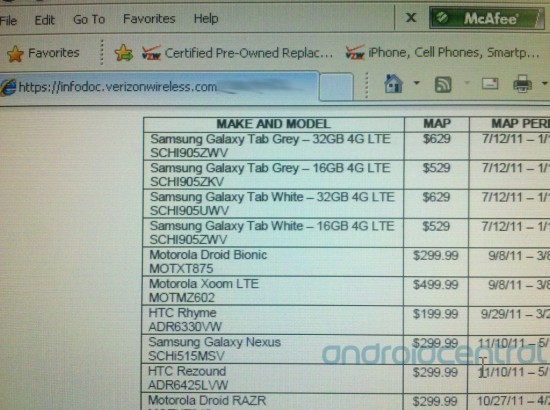
Earlier today we received the official Samsung Galaxy Nexus announcement from Verizon the device’s availability this holiday season. While that sent some Verizon customers’ rejoicing, others were quick to point out the fact that Verizon didn’t give us a launch or pre-order date for the device (negative Nancy’s).
It’s been strongly rumored for some time that the device could see a November 10th launch date but that was quite a while ago and as it so often goes in the wireless industry — dates are very subject to change. Tonight, a newer leak presents itself displaying not only the device’s official name (as opposed to “Prime”) but once again, showing the fabled November 10th date.
Given the fact that this screenshot was taken of a Verizon MAP (minimum advertised price), this is the earliest date we could see the device advertised for. You may have noticed the Motorola Droid RAZR showing up on the MAP as well but displaying the device’s pre-order date as opposed to a launch date. What does that tell us? Well, pretty much that everything is up in the air at this point.
(phandroid)

The HTC Wildfire S which previously retails at RM1,099 is now priced at RM899, which is a RM200 reduction. Meanwhile, the 2 Facebook oriented devices, HTC ChaCha and HTC Salsa are sold at RM799 and RM999 respectively. When announced, the ChaCha was going for RM1,099 and the Salsa at RM1,499.
The HTC Sensation meanwhile is still at RM1,799 as reported earlier this month. The reduction took place right before the HTC Sensation XE was announced at RM1,999.
So what do you, if you're in to HTC then its time :)
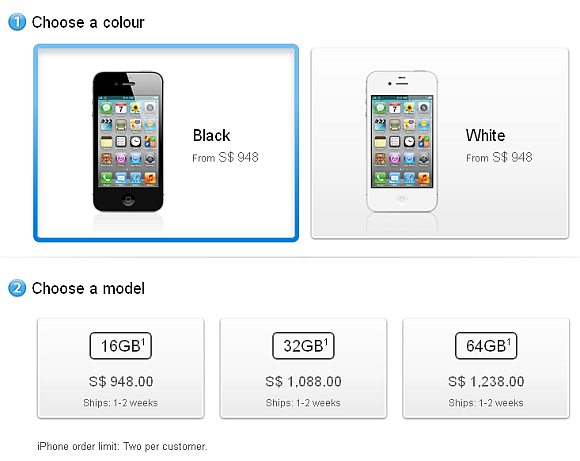
Below we have the pricing with RM equivalent with exchange rate of ($1 = RM2.47):
16GB – $948 (RM2,341)
32GB – $1,088 (RM2,687)
64GB – $1,238 (RM3,057)
Each customers can buy up to 2 units and shipping duration is listed as 1-2 weeks. There’s also a 12 months interest-free installment plan with Citibank for easy payment. This gives a rough idea of the iPhone 4S pricing if it reaches Malaysia.
For more information, head over to Singapore Apple Store.
(soyacincau)

ZTE, a company that we primarily see across the lake in places like Korea, has decided to give the U.S. some love with their newly announced "ZTE Warp." The company is debuting the new device on Boost mobile, and it comes with:
Android 2.3 Gingerbread
4.3" display
Micro SD support up to 32GB (2GB card included)
1GHz CPU
5MP rear camera w/ auto-focus and LED flash

Remember the mysterious BlackBerry that was apparently developed with Porsche Design? That device is now rumoured to be revealed at an event next week in Dubai on 27th October, jointly organised by Porsche Design and BlackBerry.
The reason for the radical change in design was because the Porsche Design team was supposedly in charge. They may seem like a strange choice, but Porsche Design has transcended the automotive trappings of its parent company to design everything from feature phones to hard drives to bobsleds, so a special edition smartphone doesn’t come entirely out of the blue.
Sure, fans of limited-edition gadgetry will probably snap them up anyway, but something about this situation just feels odd. I’ve reached out to RIM for some clarity on the situation, but haven’t received a response at time of writing. Stay tuned for updates.
We also wonder if it functions well as it looks. Those keys doesn’t look comfortable to use.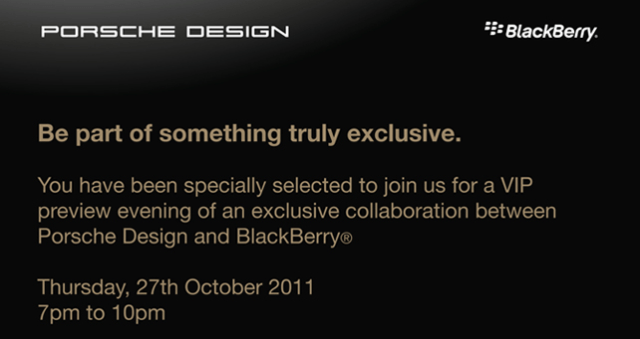
(Techcrunch)
 Here are the first official pictures of the Nokia 800 (aka Sea Ray), one of the first Nokia Windows Phone devices soon to be launched.
Here are the first official pictures of the Nokia 800 (aka Sea Ray), one of the first Nokia Windows Phone devices soon to be launched.
The 800 adopts an identical design language to the Nokia N9 with a tough polycarbonate body, curve glass screen and a 3.7-inch AMOLED Clear Black Display. Being a Windows Phone device, the Nokia 800 brings with it the obligatory trio of capacitive navigation buttons as opposed to the button-less design on the N9.
Specs include a 1.4GHz processor, 16GB of storage, an 8MP camera with Carl Zeiss optics and a 1,540 mAh battery
Samsung Galaxy Nexus and Motorola RAZR Price in Malaysia
0 comments Posted by Syed Salleh at 3:26 AM
I’m sure this device is still on more than a few people’s minds, even after the joint Samsung/Google announcement last night. The device features a similar spec’d 720p screen and some of those “new” features Google announced last night for ICS. Sense has been doing a great job at filing the void with camera filters and their own core Sense apps.
So here come's HTC Rezound, the new android baby in town.
(Android guys)

Just hours ago, the anticipated Galaxy Nexus has finally launched. This is the first device to feature Google’s latest Android 4.0 Ice Cream Sandwich OS that's pretty awesome, and a new start for the android base OS family.
The Galaxy Nexus features a huge 4.65Inch HD Super AMOLED display running at 1280x720 resolution, 1.2GHz dual core processor, 5MP rear camera, NFC module, 1GB RAM, a freaking barometer, as well as the coveted Android 4.0, Ice Cream Sandwich.
In terms of design, it isn’t the thinnest at 8.94mm but boasts having a 4.29mm bezel. Like the previous Nexus S, the display is also contoured. Over at the back, it also features a Hydra Skin cover which is similar to the one found on the Galaxy S II.
Note to Editors on the full specs:
GALAXY Nexus Product Specifications
Network
HSPA+ 21Mbps/HSUPA 5.76Mbps 850/900/1900/1700/2100
EDGE/GPRS 850/900/1800/1900
*LTE version will be available depending on the region.
Processor
1.2 GHz Dual Core Processor
Display
4.65" 1280X720 HD Super AMOLED
OS
Android 4.0, Ice Cream Sandwich
Camera
Main(Rear) : 5 MP AF with LED Flash with zero shutter lag and fast shot2shot
Sub (Front) : 1.3MP for Video Call
Video
Codec : MPEG4/H.263/H.264
Playback : 1080p@ 30fps
Recording : 1080p Full HD Video@ 30fps
Audio
Codec : MP3/AAC/AAC+/eAAC+
3.5mm Ear Jack
Google™Mobile Services
Android Market™, Gmail™, Google Earth™, YouTube™, Movie Studio
Google Maps™ 5.0 with 3D maps and turn-by-turn navigation
Syncing with Google Calendar™, Google+ app
Connectivity
Bluetooth® technology v 3.0
USB 2.0
Wi-Fi 802.11 a/b/g/n (2.4GHz/ 5GHz)
NFC
Sensor
Accelerometer, Compass, Gyro, Light, Proximity, Barometer
Memory
1GB(RAM) + 16GB/ 32GB Internal memory
Size
135.5 x 67.94 x 8.94mm, 135g
Battery
Standard battery, Li-on 1,750 mAh
The main highlight is the OS itself – Ice Cream Sandwich, which brings tablet and smartphone OS together. On first look, it does look like honeycomb OS as seen on earlier leaks. On top of that, they have added a couple of features such as improved browser, Gmail and Calendar apps. In terms of aesthetics, Ice Cream Sandwich uses a new Roboto font that is more futuristic and inspired by magazine layouts. Several gestures have been added for more seamless actions and like the Android 3.0 honeycomb tablets, the physical Android buttons are replaced with virtual ones that appear at the bottom of the screen.
In term of price in Malaysia, will provide update later on

Back in its day, the RAZR name was the epitome of style. Whoever rocked a RAZR immediately looked classy. Cause towards my perception, its damn sexy..
But what’s powering this device? Well, a dual-core 1.2GHz processor with 1GB of RAM. The device also features a 4.3-inch Super AMOLED qHD display, 8MP camera with 1080p video recording, 1800mAh battery promising 12.5 hours of 3G talk time and support 4G
network. Of course, all of this is compatible with the newly announced Motorola ACTV.
On the software side, it will be running on Android 2.3.5 and Motorola is putting emphasis on their “Smart Actions” for extended battery life which allow a user to turn off bluetooth when you get home, underclock the CPU when battery is low and promises 30% better battery life than devices without it.
Lets check out the sexy trailer..
The iPhone 4S is in the US and several markets. While many can’t wait to unbox and play around with the latest iPhone, somebody just couldn’t wait to it with a drop test.
To make things more dramatic, the drop test is done right outside AT&T in front of others that are still lining up. You can say some people are just wasteful but this video is more of a promo for repair service that specialise on iPhones. Was the damage worth it? That depends if the number of views generated is worth the damage. Since they are repair guys, this could be a small price to pay.
(soyacincau)
In an earlier shootout, the Xperia arc was pitted against the iPhone 4. Some would argue that that wasn’t a fair fight considering the iPhone 4 had only 5MP against the Xperia arcs 8.1MP camera. But on the other hand, megapixel count is not a real indicator of camera performance.
The point is, between the iPhone 4S and the Xperia arc, which one takes better pictures? After the jump is a series of pictures taken using the iPhone 4S and the Xperia ray arc.
So lets see which one is way better guys
iPhone 4S is on the left. Xperia arc on the right. Click for original size.